Kevin McGrade incurred a total animal health cost during 2016 of £6,594, which equates to 0.82p/l for the business. The farm supports 160 livestock units, which leaves the cost per livestock unit at £41/LU.
This cost includes all medicine or drugs purchased for the herd, veterinary intervention, vet call-out costs and hoof-paring on the farm. An itemised breakdown of the total farm health cost is in Figure 1.
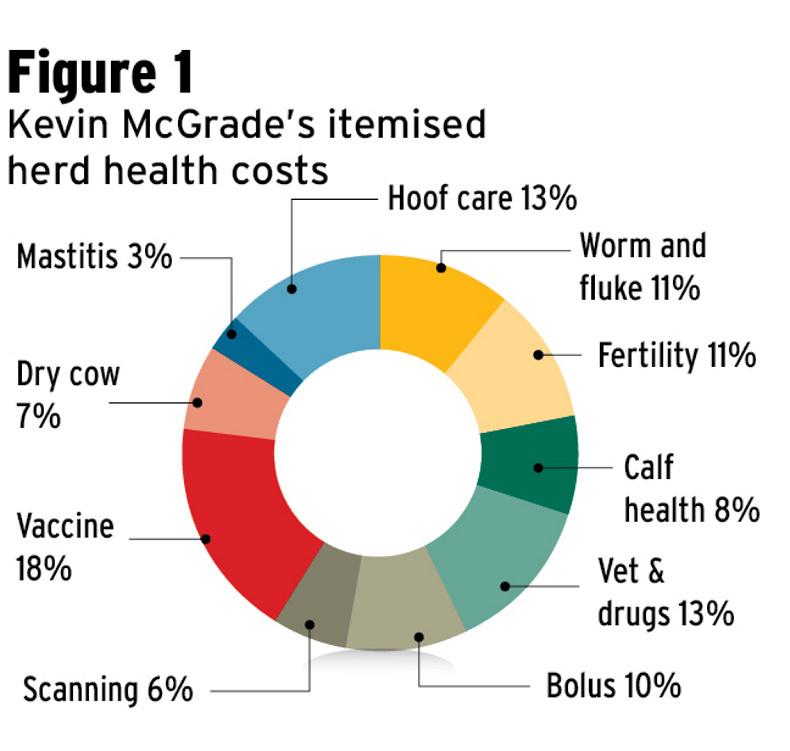
The preventative vaccine purchased for the herd includes vaccine for BVD, lepto and salmonella. Kevin also used a scour vaccine to reduce calf scour on the last 20 cows due to calve on the farm each year, which is usually the December-calving cows.
Hoof paring is carried out by a specialist, with all cows lifted once a year at drying off. Blue stone is used in the foot bath only when dermatitis is present in the herd.
Vet call-outs are minimised, with Kevin’s emphasis on preventative treatment. There were only two vet call-outs during 2016. The fertility work includes any intervention cost with the main milking herd. However, the majority of this is for the synchronising programme used on maiden heifers at breeding.
Treatment of mastitis in milking cows takes up 3% of the health cost. Cows are treated immediately with lactating antibiotic tube. The herd has a low incidence of mastitis and 2016 SCC average was 80,000.
Dry cow treatment is a long-acting tube plus sealer. Very low SCC cows get a sealer only, with no antibiotic.
In 2016, 34 cows left the farm, 33 cull cows and one dead cow. This equated to a culling rate of 26% and a cow mortality rate of 0.8%.
Figure 2 highlights the various reasons for cows leaving the farm, with the key reasons for culling cows being infertility followed by slow-milking cows or cows with SCC and udder issues. These cows may also have been repeat mastitis culprits within the herd.
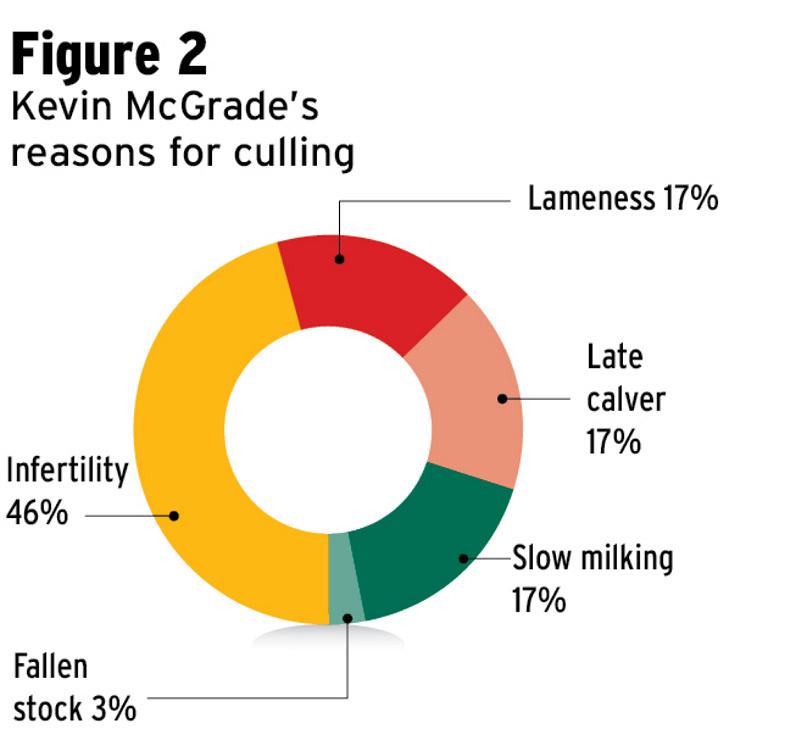
Herd health review
This is the last project farm to be analysed in terms of herd health. Within the Dairylink project, there is a swing towards more preventative animal health, with the key focus to reduce stock leaving the farm either as dead animals or culls.
Herd health costs for each project farmer vary within the group from £40/LU to £80/LU. With an extensive vaccination policy and good protocols in place for calf health and dry or milking cow therapy, a reasonable target would be £50 to £60/LU.
The higher-cost project farmers had additional costs included in herd health, such as TB testing in Charles Clarke’s case, which adds 9% to his health cost.
In Bill Brown’s case, significant herd fertility work added 16% to his overall herd health cost.
Kevin McGrade Co Tyrone
Urea has been used on the grazing block, with a compound also applied last week to lift phosphorus (P) and potassium (K). We had some 0:0:60 left from last year, so this has been applied to low-K paddocks. A compound of 18:46:0 was applied to address low-P paddocks. We used a colour code on the farm map to make it easy when identifying P and K status in paddocks and based this on 2016 soil analysis results for the farm.
In general, the grazing block close to the farm has higher P and K indices than outlying blocks. Slurry has been spread on outlying land and the grazing block using an umbilical spreading system. This has worked very well on the farm, with no tracking damage across the platform.
Breeding started on 1 December, with scan results showing 109 cows in calve on 1 March, working out at 83% of all cows in 12 weeks. Only four cows have not been served due to late calving. Twenty-four heifers have been bred with a disappointing 15 holding to first serve (62%). A stock bull has been in with these heifers since after the first serve.
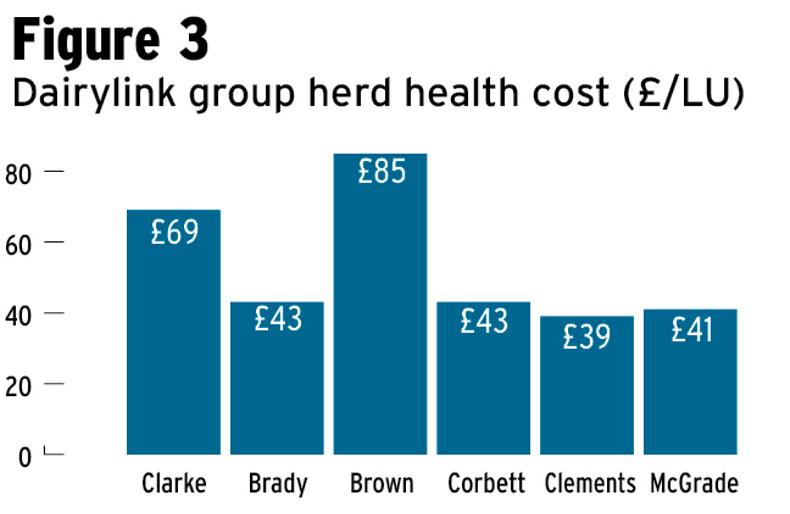







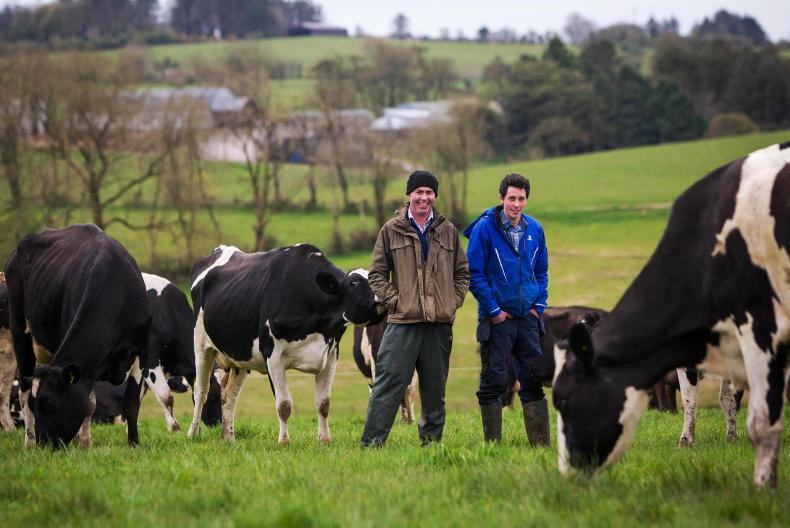
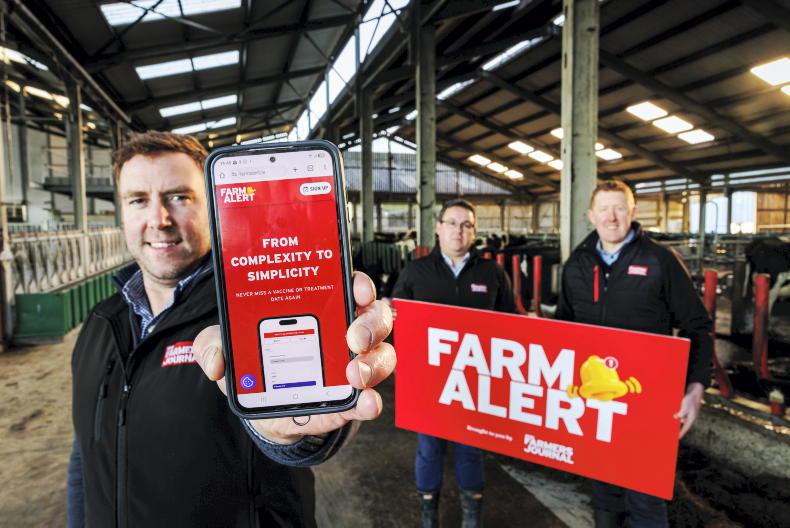
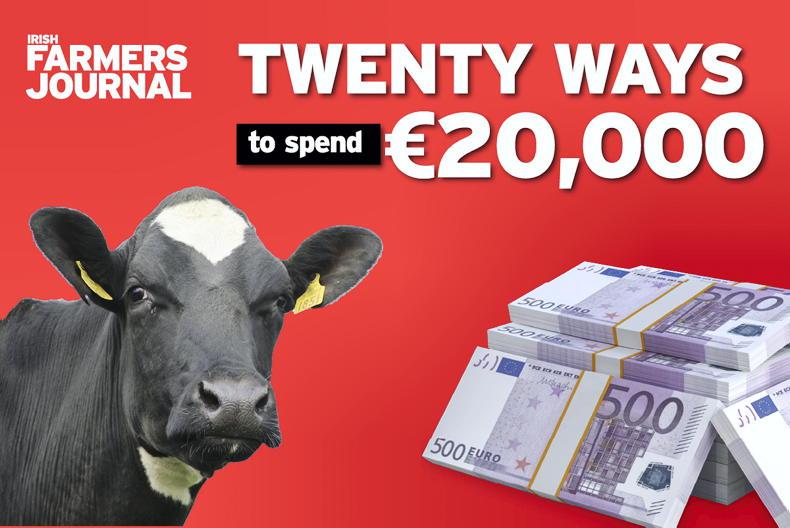
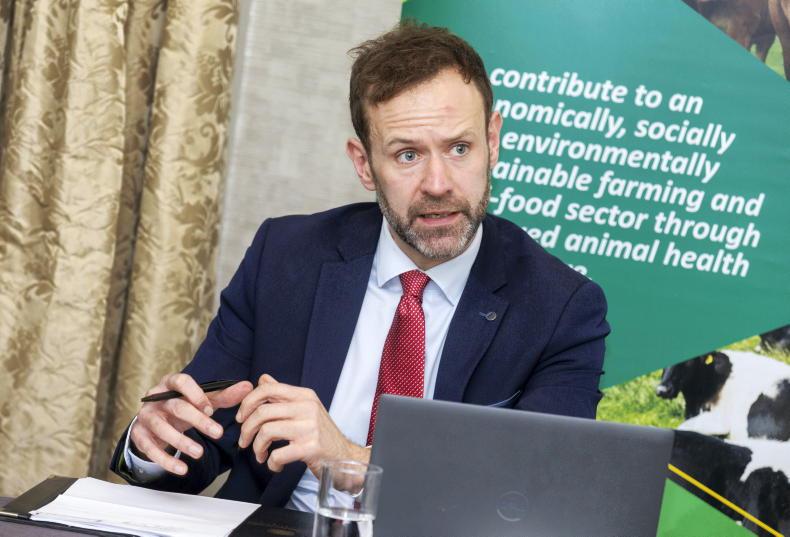
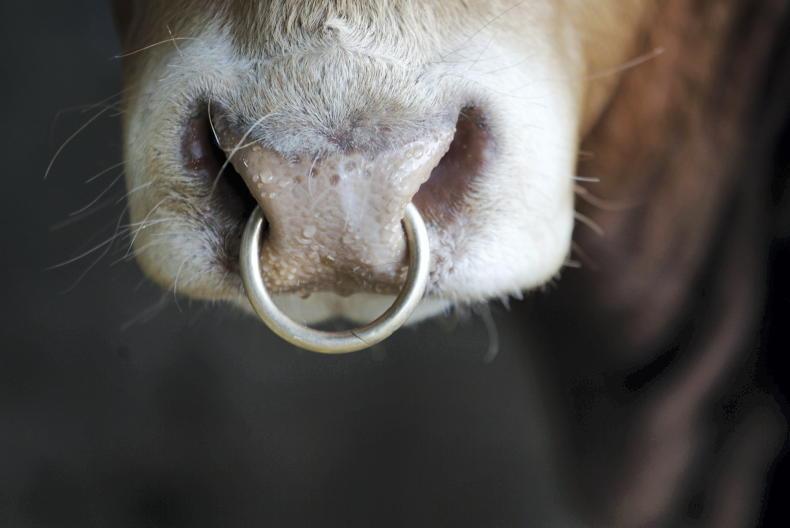
SHARING OPTIONS